|
Genres, Themes, Actors, and Directors:
- Cat-and-Mouse
- Con-Artists
- Detectives and Private Eyes
- Fritz Lang Films
- German Films
- Mind Control and Hypnosis
- Mistaken or Hidden Identities
- Silent Films
Response to Peary’s Review:
Peary opens his review of this two-part epic silent film by Fritz Lang by noting the high variability of its length in various iterations; thankfully, recent technology and restoration efforts allow modern film fanatics to view it in its full length of 229 minutes, with DVD commentary on (if desired) to clarify its historical positioning. Peary writes that the film was “certainly influenced by Caligari, and probably Nosferatu as well,” with “Fritz Lang’s diabolical villain” relying “on mind control to destroy people.” Dr. Mabuse is a true forerunner of the cinematic supervillain — someone who “doesn’t care about making money, although his criminal activities make him and his gang rich, but gets his pleasure from wielding power and, as he says, interfering in people’s lives and determining their fates.” Peary argues that “critics have rightly criticized the decision to have Mabuse fall in love” (with Welcker) “because it diminishes him from being a supervillain to being just a villainous human,” but I disagree; there’s no evidence that Mabuse’s kidnapping of Welcker is anything other than part of his grand scheme for ultimate control.
Peary notes that the “film’s visuals aren’t as impressive as those in other Lang silents, and the melodrama is not as exciting as one would hope — due in part to Goetzke being a dull hero — but Mabuse is a classic character who would become the model for future screen villains: he is proof that there is little distinction between genius and madness, that the criminal mind works in the same way as the minds of the men (like Goetzke) who work to prevent crime (Lang often makes the link between the criminal and the policeman).” Other reviewers have similarly supplemented our understanding of Mabuse’s symbolic resonance, with DVD Savant writing that he “felt he’d been hit by one of Colonel Kurtz’ diamond bullets of enlightenment when he saw Dr. Mabuse, the Gambler in 1980,” given that “it seemed like the missing link of pulp fantasy for the twentieth century, the story that connected Batman to James Bond to Cody Jarrott to Judex to Sherlock Holmes to Darth Vader.”
DVD Savant further adds that:
… author Norbert Jacques’ idea of taking all the ills of his dysfunctional society, and representing them with one monstrous villain with supernormal powers, has been an unstoppable formula throughout the last century, so popular and penetrative that most of the world today seems to think that the problems and conflicts of our modern world are ’caused’ by villainous individuals, instead of being the result of conflicting ideologies and power-based inequities.
While it’s overlong, slow, and creaky at times, I believe film fanatics will be curious to check out Dr. Mabuse once — particularly given Klein-Rogge’s surprisingly powerful performance in the title role; the look of pure malice in his eyes is enough to convince you that evil personified does exist in the world.
Favorite throw-away line: “Cocaine or cards?”
Redeeming Qualities and Moments:
- Rudolf Klein-Rogge as Dr. Mabuse
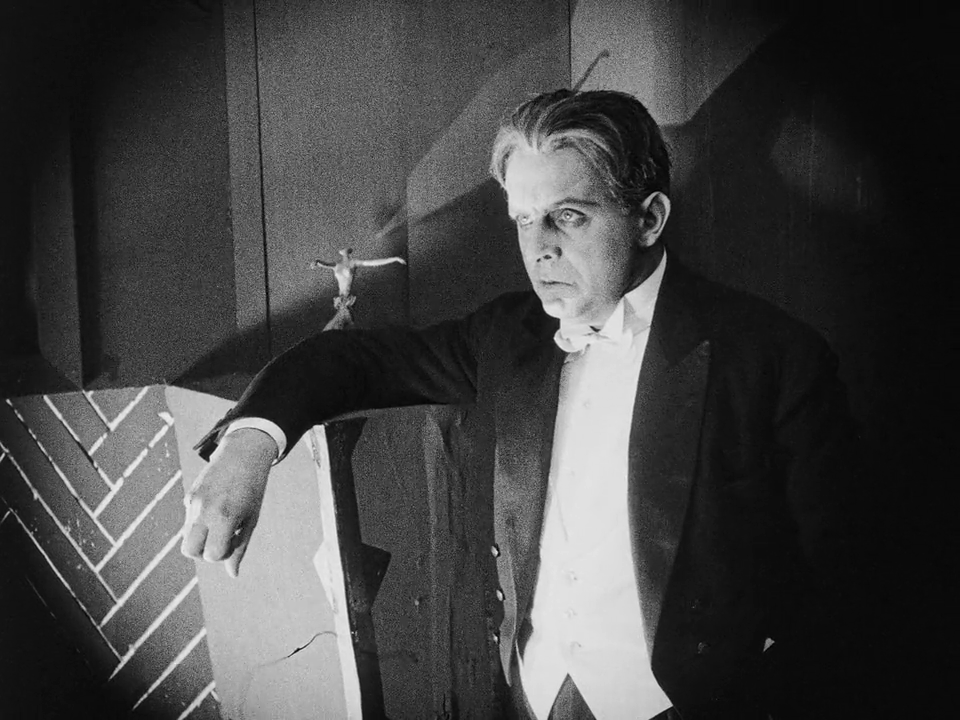
- Impressive make-up and disguises for Mabuse
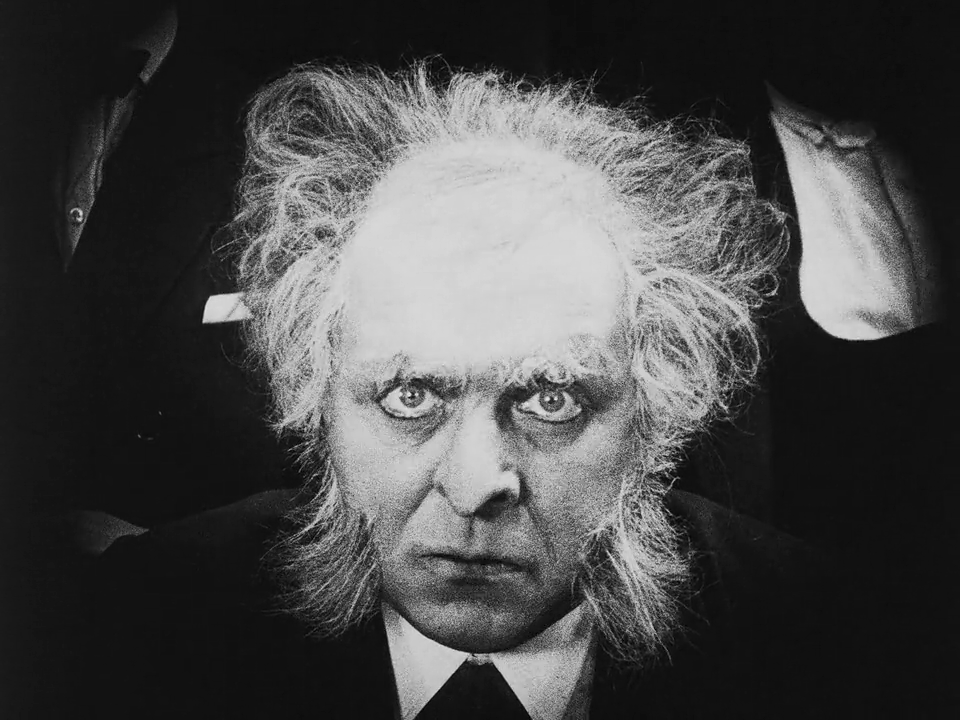

- Memorable supporting characters

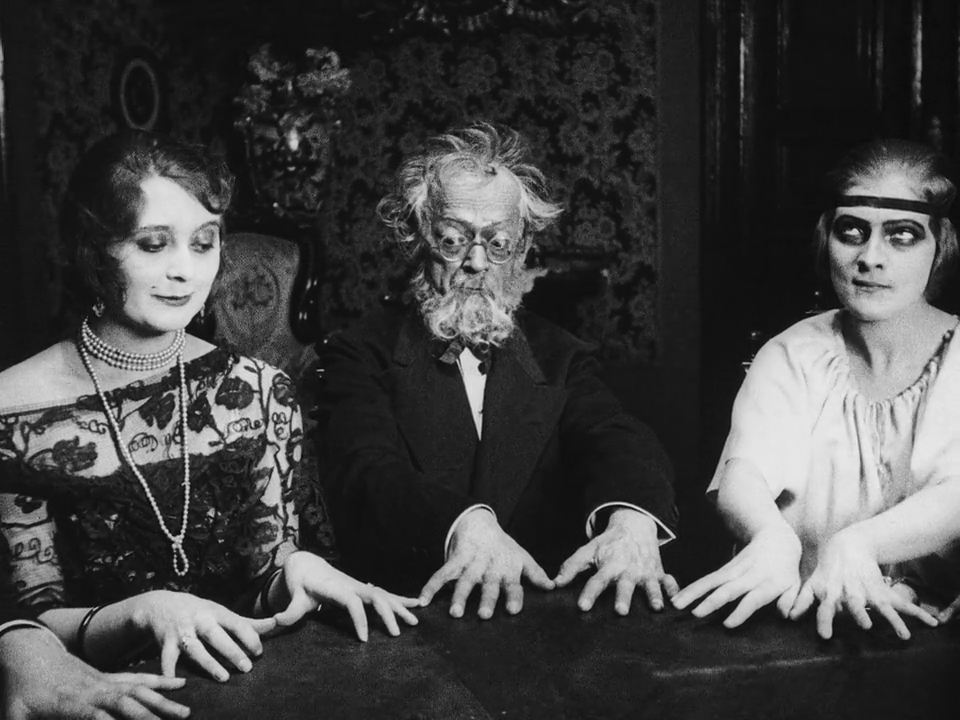
- Fine special effects
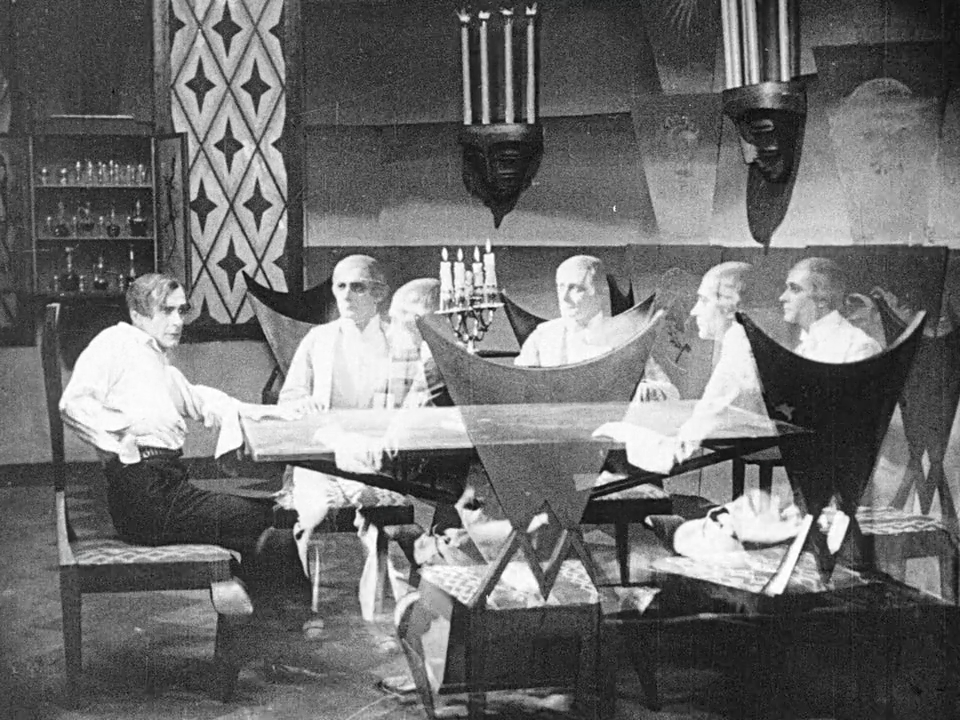

- Atmospheric cinematography and sets
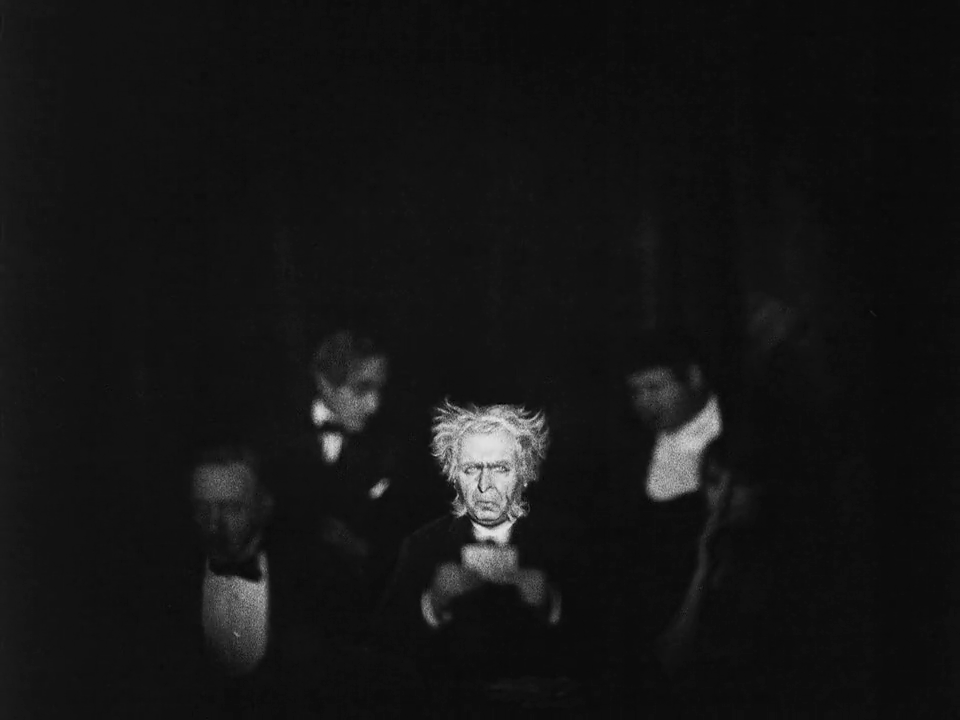
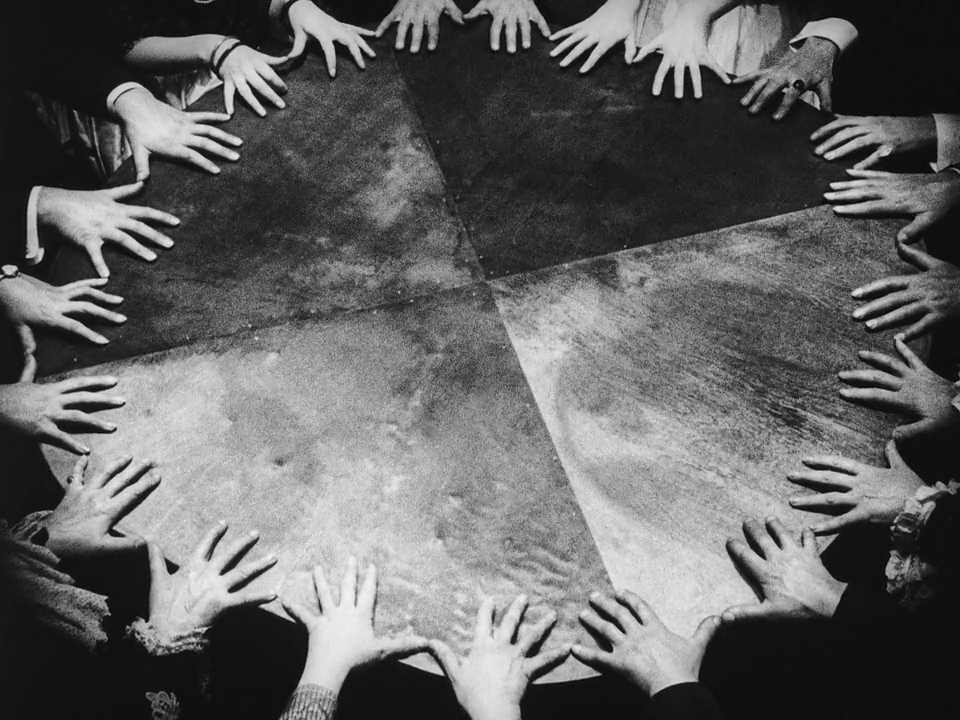
Must See?
Yes, once, for its historical importance and as early evidence of Lang’s brilliance.
Categories
- Historically Relevant
- Important Director
(Listed in 1001 Movies You Must See Before You Die)
Links:
|
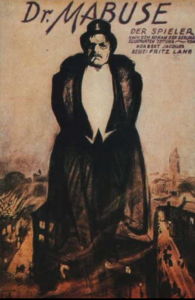









One thought on “Dr. Mabuse, The Gambler / Dr. Mabuse, Der Spieler (1922)”
First viewing. A once-must – for its place in cinema history and as an impressive achievement by Lang.
Considering that, with each passing year, it becomes harder and harder to interest (even) film fanatics in silent films, this one may be a particularly hard-sell… mainly because it’s 4 1/2 hours long!
I had some doubts whether I would be easily up to the task myself – which is why I was surprised to find myself swept up in the film fairly early on (and I more-or-less remained that way throughout, though I agree the film is “[a bit] overlong, slow, and creaky at times”… but it’s never actually dull).
The viewer is likely to marvel both at Lang’s energetic direction and the film’s overall production design (which is so vivid that it often feels like a character in the story). Some scenes are perhaps stronger (or have more impact) than others but a good many of them allow Lang to augment his strengths (i.e., the various club sequences, the séance, Mabuse being haunted by the ghosts of his victims, etc.).
Undoubtedly, ffs who are Lang fans anyway will most likely warm to this film more than others – but it’s significant-enough for ffs in general to experience.